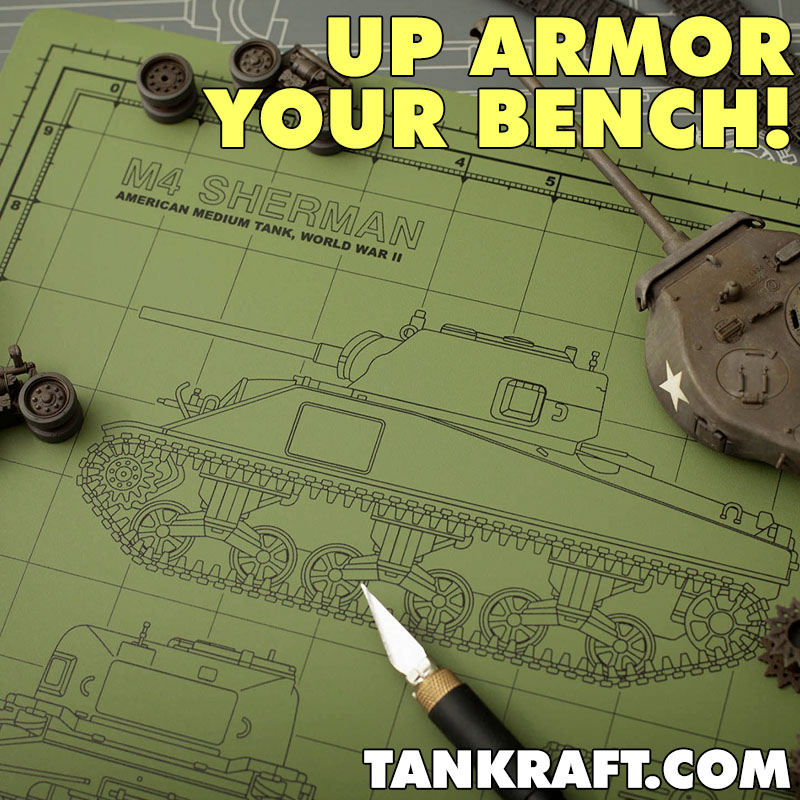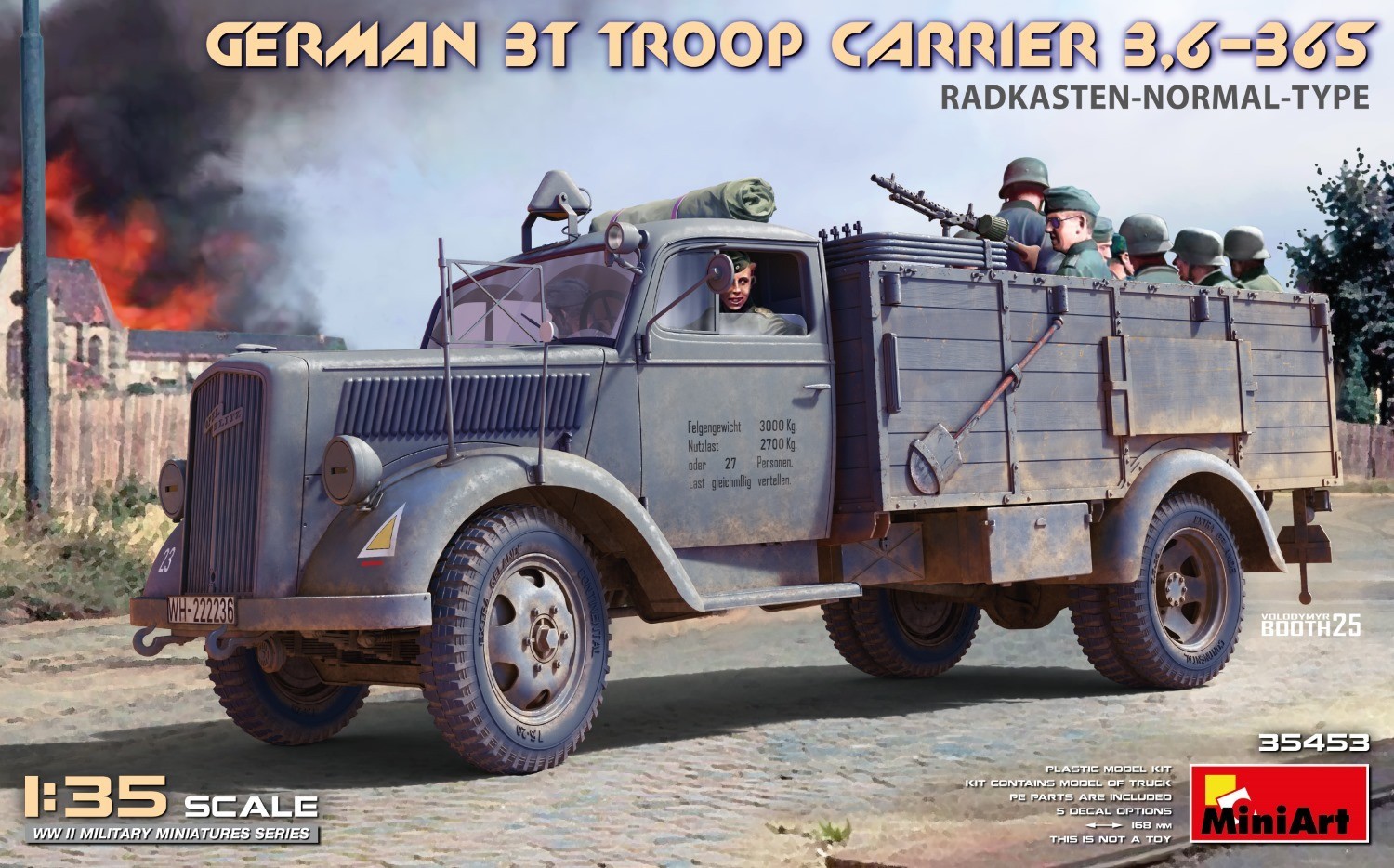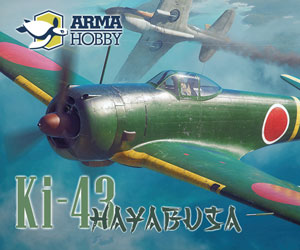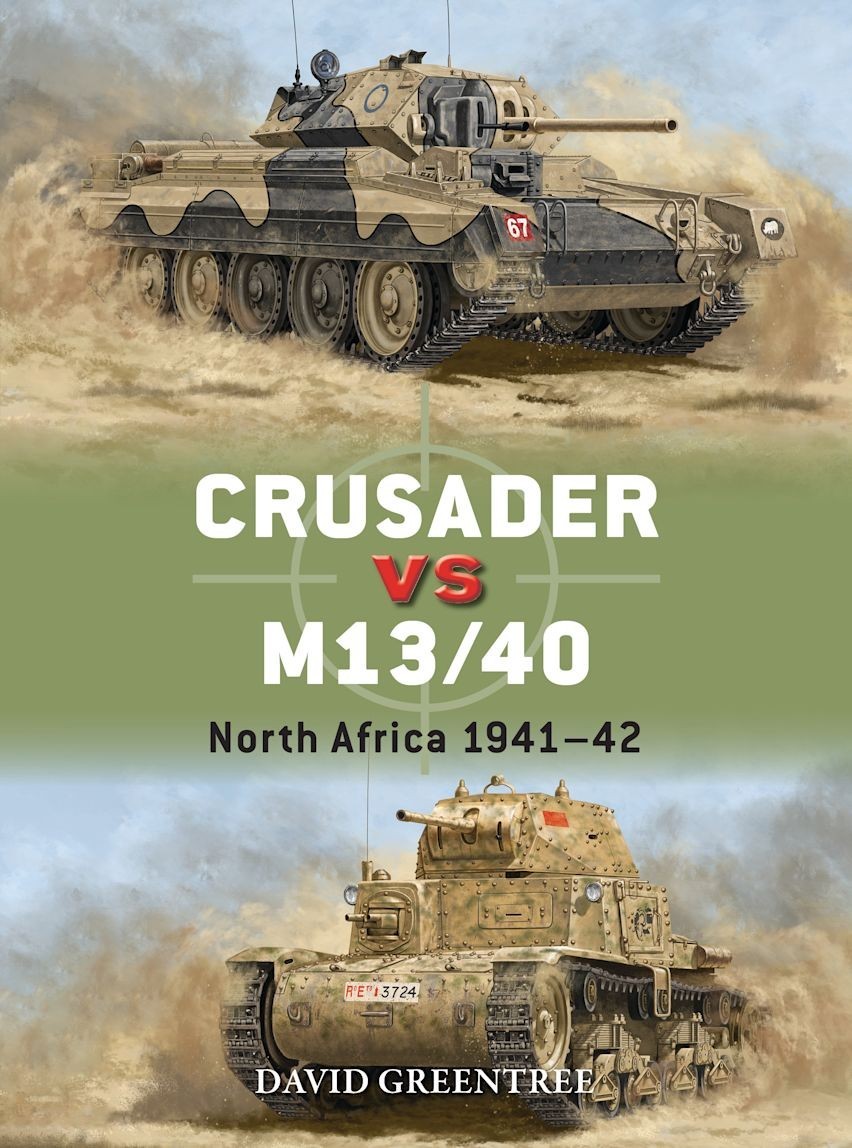
Introduction
Crusader vs M13/40 North Africa 1941–42 examines the story of the two main tanks fielded by Britain and Italy in the Western Desert during those tumultuous years. It is the 137th title of the Osprey series Duel, authored by David Greentree, and illustrated by Johnny Shumate and Alan Gilliland. This 80-page book is available in paperback, eBook, and PDF formats, and catalogued with Osprey's short code DUE 137, and ISBN 9781472861092 for the paperback (the other formats have different ISBNs).
Both of these tanks are popular but underrepresented modeling subjects. Italeri, Border and Gecko make cruisers and Crusaders in 1/35, although only Italeri and Tamiya have kitted a 1/35 M13/40. For modelers interested in those subjects, Osprey writes of this book:
This illustrated study assesses the British Crusader and the Italian M13/40, two medium tanks that played crucial roles in World War II's Desert War.
Making its combat debut in North Africa during December 1940, Italy's M13/40 medium tank was armed with a 47mm main gun. Its British opposite number, the Crusader I, was armed with a 2-pdr (40mm) main gun; it entered the fighting in June 1941. In this book, David Greentree charts the evolution of these two tanks as the Desert War raged on.
Featuring all-new full-colour artwork, archive photographs and expert analysis, this engaging study assess the origins, development and combat effectiveness of these two mainstays of the Desert War during 1941–42.
This can be a worthy companion book to Osprey titles Valentine Infantry tank vs Panzer III, Italian Medium Tanks, and Desert Armour. Read on to see what this title offers.
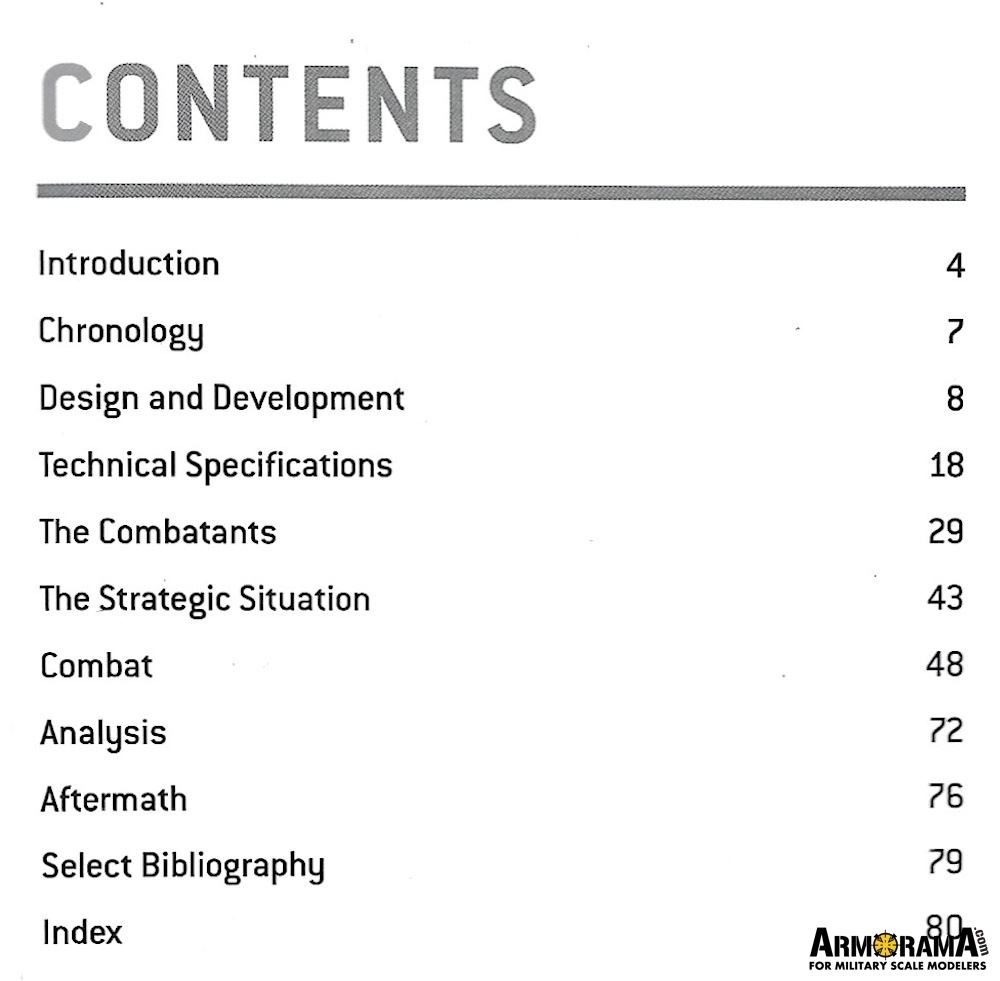
While constrained within an 80-page format, this book offers a lot of information, utilizing both British and Italian sources. It is laid out typical of Duel books and the author composed it fairly well. Callouts and other graphics emphasize certain topics. Short biographies introduce us to two tankers, Stuart Pittman and Pietro Bruno. Another topic covered is the strength, composition, and employment of tank divisions. However, there are some peculiarities in that some topics are included in odd areas, such as the mixing of ammunition vulnerability in the Mobility sub-chapter. Another faux pas is not even mentioning the 2-pounder 40mm gun high-explosive shell in the text, and yet illustrating one. The only substantial typo is describing the M13/40 tracks as consisting of eight track links per side instead of (presumably) 80. Listing the German 8.8cm FlaK 36 as "88/55" seemed strange but Italy bought some 50 batteries of 88s from Germany, designated the Cannone da 88/55. With that in mind, pay attention to weapons nomenclature. British tank and ordnance designations seem straightforward. Italian tank designations are of the military prefix "M" followed by the model number and year of acceptance (M13/40, M14/41, M15/42), while ordnance is designated by caliber followed by the length of the barrel in multiples of the caliber, and year of deployment (105/28 Model 1913). Other guns are - as mentioned above - listed as caliber and barrel caliber-lengths (88/55, 90/53). Also, I think this is the first Duel book I have read that does not have a table comparing the vital stats of both tanks, and variants.
Whether you think those examples are significant or not, here are examples of details offered for both tanks, e.g., types and ranges (stationary and in motion) of radio/transmitters, armor quality and effects when hit. The author discusses spotting characteristics differentiating variants. I appreciate the author explaining the tactical markings for the two countries. Several paragraphs present firepower tests, including tests of captured tanks, including:
- accuracy at various ranges
- accuracy of sights
- penetration at various ranges
- ammo types and loadouts.
A lengthy photo caption explains the logistics and supply considerations to keep "Ariete" in action per day at a particular distance from the supply base, e.g., how many trucks and how much time was required to move the required tonnage, and cycle time between trips.
According to the author, Italy joined the tank party late but their doctrine was generally superior to the British. Covered concisely is the British military chaos concerning the use of tanks before and even during the war, and even field commanders undermining their peers with opposing doctrinal ideas. Three pages focus on the mechanical and mobility flaws of the Crusader, and random paragraphs continue this topic. This includes design errors and manufacturer quality control failures; what components and equipment failed after drives of three or four specific distances; field and rear area workshop requirements to try to revive the paperweights, and the Ministry of Defense's solution to the problem. (Bureaucracy at its finest.) Although the author cites investigations at field grade level, he states that the crews generally did not dislike the unreliability of the cruiser and Crusader tanks, despite numerous sources to the contrary; he also does not mention that the Red Army, following catastrophic tank losses, flatly refused to accept Crusaders, even for testing. Flaws and problems with the Italian tanks are presented, too. It is not all gloom and doom as the relative merits and strengths of the tanks are discussed, i.e., the 47mm gun and sight of the M13/40 was more accurate than the British equipment. Italian engineers designed a superior tank engine, as confirmed by British technicians.
Further combat capability of both types is examined and this topic reveals some gems of knowledge. Acknowledging the Crusader's general combat weakness, before Operation Crusader it was decided that American Grant tanks were be added to units to guard the Crusaders. While the above may sound like a continuous dirge for British tanks, the author discusses how the Italian tanks were eventually fortified with supporting AFVs as their combat effectiveness failed because, while Crusaders were able to be up-gunned and up-armored, Italy's tanks were not.
The Strategic Situation starts in September 1940 with Italian General Graziani's botched offensive towards Egypt, how he deviated from his adherence to doctrine, and his stunning defeat by United Kingdom forces, which led to the arrival of the Germans under Rommel. More than 20 pages of chapter Combat recount how these two tanks fared in combat during three battles: Operation Crusader; Gazala; Second El Alamein. While there are specific excerpts of tank vs tank, the battles are described through concise accounts, e.g., M13/40s and M14/41s deployed to a ridge guarding The Cauldron during Gazala, and the battle of Bir el Gobi. That fight includes accounts of Lt. T. Elder Jones' outnumbered dramatic combat with a crippled Crusader against M13/40s. A similar fight by 2Lt Gordon-Creed is also told in detail. Pietro Bruno's heroic rallying of his men during Second El Alamein is told, too. Kills and loses are presented following battles, although it is not always clear if Crusaders were knocked out by M13/40s, and visa versa.
Finally, Analysis and Aftermath examine the further use of Crusaders and M13/40s into 1943, and beyond.
Photographs, Artwork, Graphics
Modelers may find some inspiration and reference material for their models and for dioramas. I did not count the photos but most pages have a photo or illustration. They run the gamut between crystal clear and amateur "grab shots." Most of the photos are new to me. Most are black-and-white although there are several color photos of museum tanks and an Italian tanker's helmet, and a single wartime color image of a Crusader in Tunisia. A few images I find remarkable for reference/inspiration are:
- Crusader with applique armor on the lower hull and glacis (although the author does not mention it)
- Interior of a M14/41 turret, keyed to 12 components
- Color shots of preserved Italian tanks and a Semovente
- Combat image of a crewman bailed out of a burning Crusader
- Badly shot-up M13/40 with 11 obvious hits.
Artwork/Illustrations
1. Crusader and M13/40 3-view: front; profile; rear.
2. Gun sight views for the 2-pdr and 47mm.
3. Reproduction of engineering drawings of a Crusader turret, dated November 5, 1942, keyed to many components.
4. Battlescene: Lt Creed's stand (limp?) in the damaged tank against several Italian tanks.
5. Battlescene: Tenente Bruno's heroic attack.
Color illustrates of main gun ammo:
1. 2-pdr High explosive and 6-pdr
2. 47mm APBC and HE.
Maps
Maps orient the reader and two enhance the book:
- North Africa campaign, September 1940-November '42, keyed to 9 events.
- Bir el Gobi battle, keyed to 9 items.
The only graphics is a key to military symbols printed inside the front cover. The imagery in the book supports and enhances the text effectively.

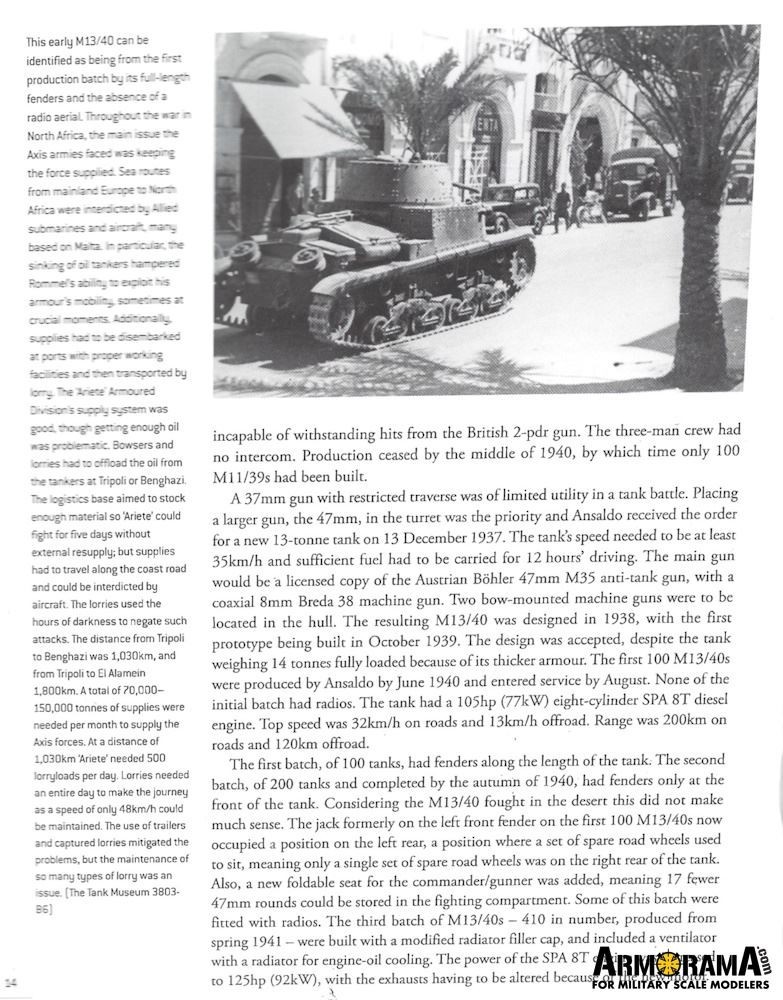



Conclusion
Crusader vs M13/40 North Africa 1941–42 is an interesting book and a good match-up for Osprey's Duel series. These were two of the prominent tanks of a period and locale of great interest for many modelers (count me in!). They may not be Tigers or T-34s or Shermans but they are equally as interesting. Stories such as Lt Gordon-Creed's desperate fight at Bir el Gobi, and Tenente Bruno at El Alamein give insight beyond raw data and facts. Those facts and data are fascinating in their own right. Many images are new to me and I appreciate the illustrations. A typo and the lack of a basic table presenting specific characteristics of the M13/40 and Crusader is disappointing.
Although there are a few issues as noted above, I do not have anything of consequence to complain about this book. I think it will a valuable addition to modelers and enthusiasts of the North African campaign, British or Italian armor forces, and Desert War battles. Recommended.
Please remember to mention to Osprey and retailers that you saw this book here - on ARMORAMA.

















